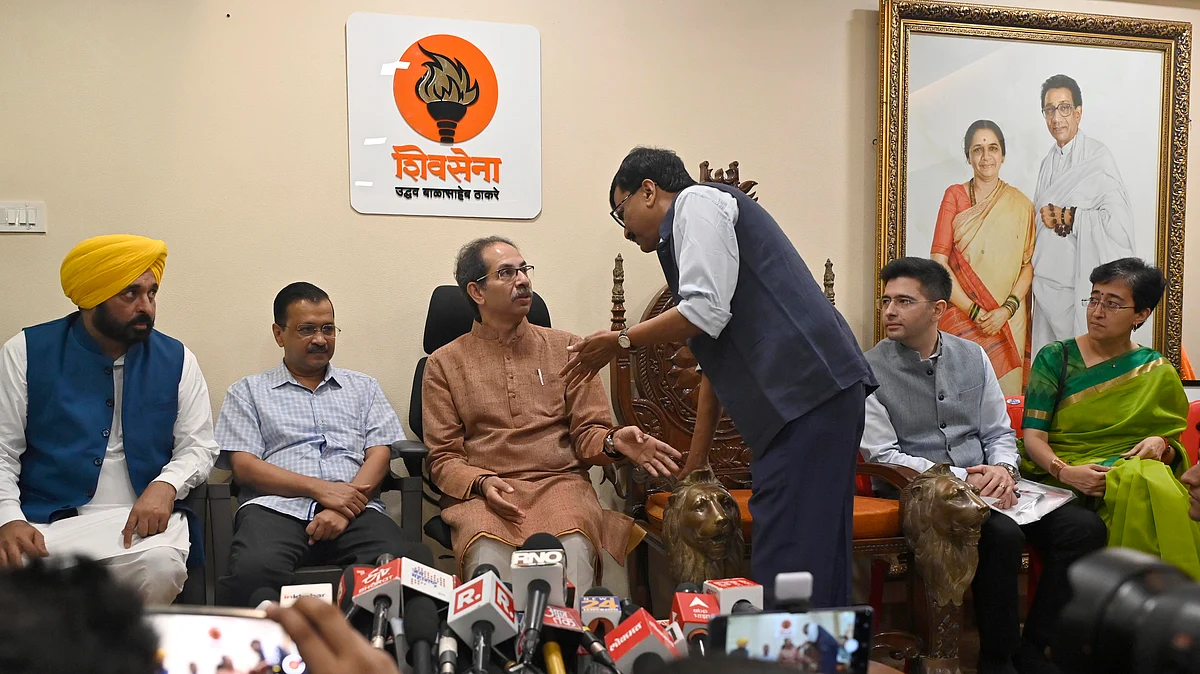Nation
Herald View: No Ordinary Ordinance
It took the Modi government just eight days to bring in an ordinance that directly challenges the verdict of a five-judge constitution bench of the Supreme Court of India

The tug of war between the Union government and the state of Delhi on who holds the reins of the administrative Services—in other words, who gets to choose and control the bureaucrats who serve the state—has been an ongoing affair for close on eight years.
Politics aside, there are perhaps some conflicts built into the situation itself: we’re talking about the state government of the national capital. Delhi is not a full state but it has a legislative assembly and an elected government with a popular mandate. But Delhi, unlike any other Union territory, is also the national capital, on which the Union government has a claim.
The Constitution sets boundaries for both, albeit with some interpretive slack and still enough room for contestation. But never before in the history of independent India have we known a more grasping, appropriating, power-hungry Centre.
Published: undefined
It took the Modi government just eight days to bring in an ordinance that directly challenges the verdict of a five-judge constitution bench of the Supreme Court of India, which adjudicated the dispute in favour of the Delhi state government and handed over the reins of the Services to the state government in a judgement delivered on May 11.
The apex court did so on reasoned, well-articulated grounds, but before we get to that, consider this: by design, an ordinance is an instrument that allows the government of the day to get legislative sanction for urgently needed executive action when Parliament is not in session.
Think of it as a bypass in an emergency such as a war or a pandemic. Even before we engage with the constitutional ramifications of this particular ordinance, let’s ask if it passes the commonsense test of urgency: was this action necessary before Parliament reconvened? It tells you something if you are hard-pressed to justify the move in those terms. Used tactically, as in the present case and famously in the case of the controversial farm laws, promulgating ordinances is a way of circumventing parliamentary discussion. For perspective, the Modi government has used it more than 75 times!
Published: undefined
This ordinance provides for a National Capital Civil Service Authority, which will be headed by the chief minister but also include, as members, the chief secretary and principal secretary (home), and ‘all matters required to be decided by the Authority shall be decided by [a] majority of votes of the members present and voting’.
In other words, these two members, both appointed by the Union government, can outvote and overrule the chief minister. This dilution of the powers of the Delhi government is questionable in light of the apex court’s interpretation of Article 239AA.
Inserted into the Constitution in 1991, Article 239AA confers special status on Delhi, on the recommendations of the S. Balakrishnan panel, which was set up in 1987 to look into Delhi’s demands for statehood. Simultaneous with the inclusion of Article 239AA came the Government of National Capital Territory of Delhi Act, 1991, to provide a framework for the functioning of the Delhi government and its legislative assembly.
Another constitution bench of the Supreme Court had, in July 2018, invoked and interpreted the provisions of Article 239AA in outlining the powers of the Delhi government. It held that even though Delhi could not be accorded the status of a state, the concept of federalism would still apply to it.
With the insertion of Article 239AA, the bench ruled, Parliament had envisaged a ‘representative form of government’ for Delhi, making room for a directly elected state assembly with legislative powers in matters on the state list and concurrent list, barring those exempted.
It also clarified that the LG (lieutenant governor) was to act ‘on the aid and advice of the state’s council of ministers’, except when he decides to refer the matter to the President for a final decision.
Published: undefined
It has been clear for a while now that these constitutional niceties are a nuisance for the incumbent Union government. In fact, it will do whatever it takes to appropriate power—and its playbook is well known.
All states that are not ruled by the BJP are wary of its designs, all of them know that the Union’s federal structure is under assault. Nearly all of them have, therefore, rallied around Arvind Kejriwal’s Delhi government—they all see the ordinance for what it is.
What muddies the issue for those opposing the ordinance while not quite supporting the Kejriwal government is his government’s double standards—it’s hard to ignore that the AAP backed the BJP when it violently disenfranchised the people of the erstwhile state of Jammu & Kashmir.
Published: undefined
Follow us on: Facebook, Twitter, Google News, Instagram
Join our official telegram channel (@nationalherald) and stay updated with the latest headlines
Published: undefined